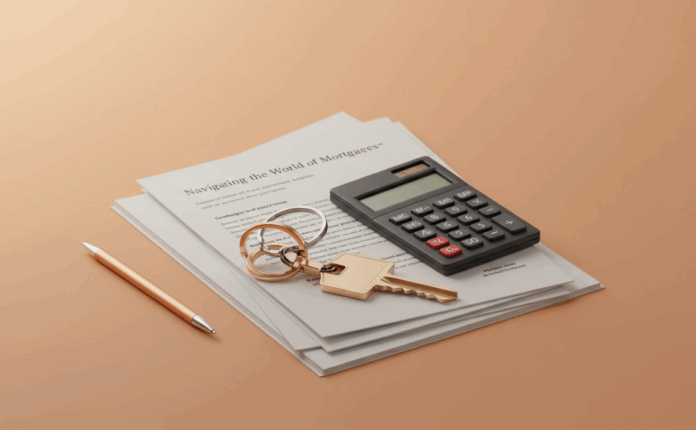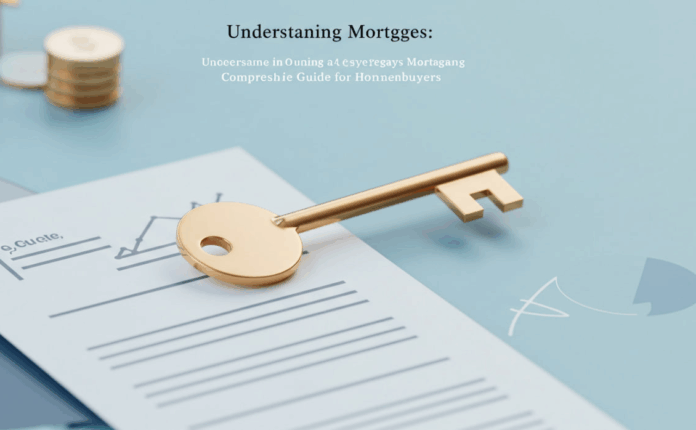Mortgages are a cornerstone of homeownership, allowing millions of people to turn the dream of owning a property into reality. At its core, a mortgage is a financial agreement where a lender provides funds to purchase a home, and the borrower repays the loan over time, typically through monthly payments that include both principal and interest. In this article, we’ll dive deep into the world of mortgages, exploring everything from the basics to advanced strategies. Whether you’re a first-time buyer or looking to refinance, this guide offers practical advice to help you navigate the process confidently.
What Is a Mortgage and How Does It Work?
A mortgage isn’t just a loan—it’s a long-term commitment that ties your financial future to your home. When you take out a mortgage, you’re borrowing money from a bank, credit union, or another lender to cover the cost of the property. In exchange, the lender places a lien on the home, meaning they can claim it if you fail to make payments.
Key Components of a Mortgage Payment
Every mortgage payment breaks down into several parts, often remembered by the acronym PITI:
- Principal: The original amount you borrowed, which decreases over time as you pay it down.
- Interest: The cost of borrowing the money, calculated as a percentage of the outstanding balance.
- Taxes: Property taxes, which vary by location and are often escrowed into your payment.
- Insurance: Homeowners insurance to protect against damage, and sometimes private mortgage insurance (PMI) if your down payment is less than 20%.
For example, on a $300,000 mortgage with a 30-year term at 6% interest, your monthly principal and interest payment might be around $1,800, but adding taxes and insurance could push it to $2,200 or more. Use online calculators (based on current rates) to estimate your own scenario, but always verify with a lender for accuracy.
The Amortization Process
Mortgages are amortized, meaning early payments go mostly toward interest, while later ones chip away at the principal. This structure benefits lenders but can feel frustrating for borrowers. To visualize, consider a 15-year vs. 30-year loan: The shorter term saves on total interest but requires higher monthly payments. Actionable tip: If you can afford it, opt for a bi-weekly payment schedule to pay off the loan faster and reduce interest costs.

Types of Mortgages: Which One Fits Your Needs?
Not all mortgages are created equal. Choosing the right type depends on your financial situation, risk tolerance, and market conditions. Here are the most common options:
Fixed-Rate Mortgages
These are the gold standard for stability. Your interest rate stays the same for the entire loan term, typically 15, 20, or 30 years. This predictability is ideal if you plan to stay in your home long-term and want to budget without surprises.
- Pros: Locked-in rate protects against rate hikes; easier to plan finances.
- Cons: Higher initial rates compared to adjustable options; less flexibility if rates drop (though you can refinance).
- When to Choose: In a rising interest rate environment, like if rates are expected to increase in the coming years.
Adjustable-Rate Mortgages (ARMs)
ARMs start with a lower introductory rate for a set period (e.g., 5/1 ARM means 5 years fixed, then adjusts annually). After the initial phase, the rate fluctuates based on market indexes.
- Pros: Lower starting payments make them accessible for short-term homeowners or those expecting income growth.
- Cons: Risk of payment shocks if rates rise; requires monitoring economic trends.
- When to Choose: If you plan to sell or refinance before the adjustment period, or in a low-rate environment.
Other Specialized Mortgages
- FHA Loans: Government-backed for buyers with lower credit scores or smaller down payments (as low as 3.5%). Great for first-timers, but include upfront and annual mortgage insurance premiums.
- VA Loans: For military veterans and active-duty personnel, offering no down payment and no PMI, but with a funding fee.
- USDA Loans: For rural homebuyers with low to moderate income, featuring 0% down but geographic restrictions.
- Jumbo Loans: For high-value homes exceeding conforming loan limits (around $766,550 in most areas as of 2025), requiring excellent credit and larger down payments.
Pro tip: Compare at least three lenders to find the best fit. Tools like loan comparison spreadsheets can help track APRs, fees, and terms side-by-side.
How to Qualify for a Mortgage: Step-by-Step Guide
Securing a mortgage involves more than just a good salary—lenders assess your overall financial health. Here’s how to prepare:
Step 1: Check Your Credit Score
A FICO score of 620 or higher is typically needed for conventional loans, but 740+ unlocks the best rates. Review your credit report for errors via annualcreditreport.com and dispute inaccuracies.
Step 2: Save for a Down Payment
Aim for 20% to avoid PMI, but even 5-10% works for many programs. Factor in closing costs (2-5% of the loan amount) for inspections, appraisals, and fees.
Step 3: Calculate Your Debt-to-Income Ratio (DTI)
Lenders prefer a DTI under 43%, where your monthly debts (including the mortgage) don’t exceed 43% of your gross income. Formula: (Total monthly debts / Gross monthly income) x 100.
Step 4: Get Pre-Approved
Submit financial docs (pay stubs, tax returns, bank statements) to a lender for a pre-approval letter. This shows sellers you’re serious and helps you know your budget.
Step 5: Shop Around and Lock in a Rate
Interest rates can vary by 0.25% or more between lenders, saving thousands over the loan life. Lock your rate once you find a home to protect against fluctuations.
Common pitfall: Don’t make big financial changes (like buying a car) during the approval process, as it could derail your application.
Factors Influencing Mortgage Rates and Payments
Mortgage rates aren’t random—they’re shaped by broader economic forces. As of 2025, rates hover around 6-7% for 30-year fixed loans, influenced by:
- Federal Reserve Policies: Rate hikes to combat inflation push mortgage rates up.
- Economic Indicators: Unemployment and GDP growth signal lender risk.
- Your Personal Factors: Credit score, loan size, and down payment directly impact your rate.
- Market Trends: In volatile times, like post-pandemic recoveries, rates can swing quickly.
To lower your rate: Improve your credit, buy discount points (prepay interest for a rate reduction), or consider lender credits for closing costs.
Pros and Cons of Taking Out a Mortgage
Advantages
- Build Equity: Each payment increases your ownership stake, potentially leading to wealth growth.
- Tax Benefits: Deductible interest and property taxes can reduce your taxable income (consult a tax advisor).
- Leverage: Borrow more than you could save upfront, accelerating homeownership.
Disadvantages
- High Costs: Interest can double the home’s price over 30 years; closing fees add up.
- Risk of Foreclosure: Missed payments can lead to losing your home.
- Opportunity Cost: Money tied up in a home can’t be invested elsewhere, like in stocks.
Balancing act: If home values appreciate (historically 3-5% annually), a mortgage can be a smart investment. Track local real estate trends to inform your decision.
Tips for Managing and Paying Off Your Mortgage Efficiently
Once you’re in, smart management keeps costs down:
- Refinance When Rates Drop: If your rate is 1% above current market, refinancing could save $200+ monthly—but calculate break-even on closing costs.
- Make Extra Payments: Target the principal to shorten the term and save on interest. Even $100 extra monthly on a $250,000 loan at 6% shaves years off.
- Build an Emergency Fund: Cover 3-6 months of payments to avoid defaults.
- Monitor Escrow: Review annual statements to ensure taxes and insurance are accurate.
- Consider Recasting: If you make a large principal payment, ask your lender to recast for lower monthly payments without refinancing.
Long-term strategy: Use a mortgage payoff calculator to model scenarios, like accelerating payments vs. investing extras elsewhere.
FAQ
What is the difference between a mortgage and a home equity loan?
A mortgage is the primary loan used to purchase the home, while a home equity loan is a secondary loan against the equity you’ve built up, often used for renovations or debt consolidation.
How long does the mortgage approval process take?
Pre-approval can take 1-3 days, but full approval after finding a home typically spans 30-45 days, including underwriting and closing.
Can I get a mortgage with bad credit?
Yes, but options are limited to FHA or subprime loans with higher rates and fees. Focus on improving your score first for better terms.
What happens if I miss a mortgage payment?
Lenders offer grace periods (usually 15 days), but repeated misses lead to late fees, credit damage, and eventual foreclosure. Contact your lender immediately for hardship options like forbearance.
Is it better to rent or buy with a mortgage?
It depends on your timeline, location, and finances. Buying makes sense if you stay 5+ years and can afford the payments; renting offers flexibility but no equity buildup. Use rent-vs-buy calculators for personalized insights.



